- Alisha Lovrich: Women in Sports Photography
-

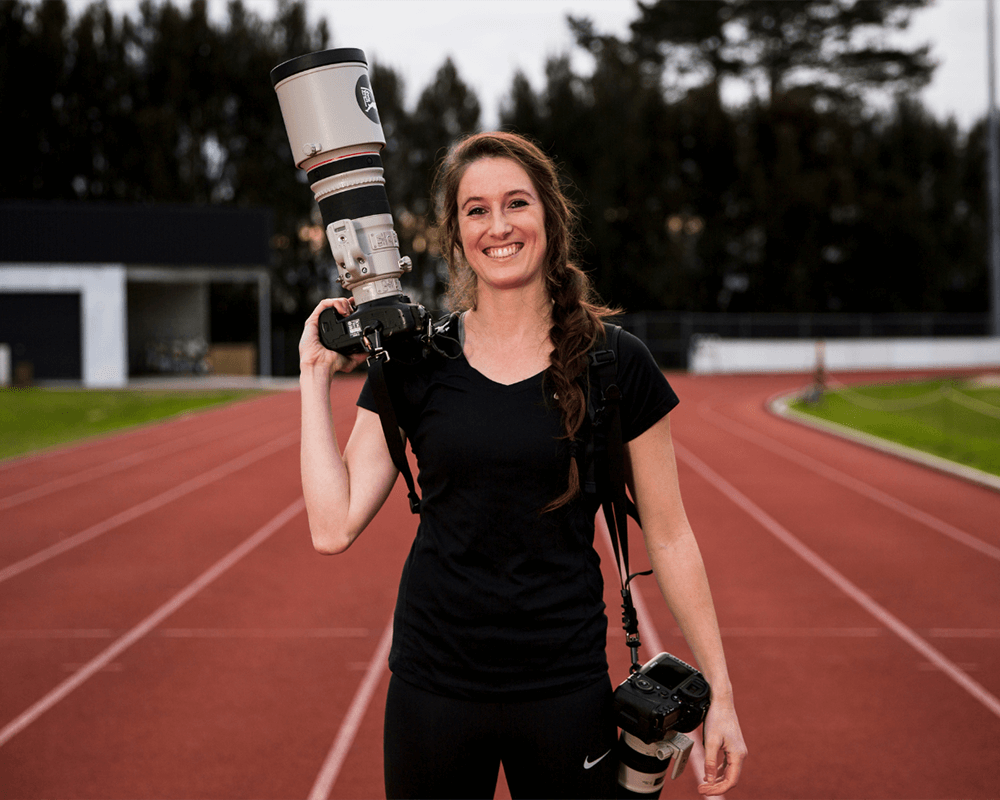
When you are watching sport on TV you probably can count on one hand how many female photographers you spot on the sidelines and might make you think that it is intimidating and daunting to get out there with the boys but let me assure you, it is not.
Hi, I am Canon Ambassador Alisha Lovrich and let me share with you some of my experiences as a woman in sports photography.
I entered the world of sports photography through my own sport. My advice to any fellow wahine out there wanting to get into sports photography is to start with the sport you know, the sport you currently participate in or used to, or even the sport your kids participate in.
For me personally, I was injured during the pinnacle point of the athletics season (classic). We had our Auckland Championships and luckily that year our National Championships were also in Auckland. I came out with my camera to take photos of my friends. My first ever camera: The Canon EOS 600D. The classic twin lens kit you could buy. I mainly used the 55-250mm and just roamed around the outside of track, no media accreditation or anything. Luckily, since tracks in New Zealand are no seat ticketed events or full athletics stadiums so it is easy enough to do this. What I found cool was that never once did I feel intimidated taking photos in the athletics environment because I’m a woman.
In the athletics world, both genders compete in the same track in the same event and same number of events so it feels pretty equal. There were definitely some press photographers there with the big white Canon telephoto lenses I was admiring, and while I don’t remember seeing any women out there I never really felt intimidated because in reality they were in my world, I wasn’t in theirs. Because I was never infield either, in fact, I was barely noticeable to the point I don’t think people knew I was taking photos until I uploaded them all to Facebook so my friends could see them. Then, Auckland Athletics spotted them. They essentially granted me an all access pass to Athletics Auckland events which allowed me to really hone into my craft. These events are never big enough to have lots of other photographers at so I was the only one. My work then eventually caught the eyes of Athletics New Zealand and everything started to grow from there.
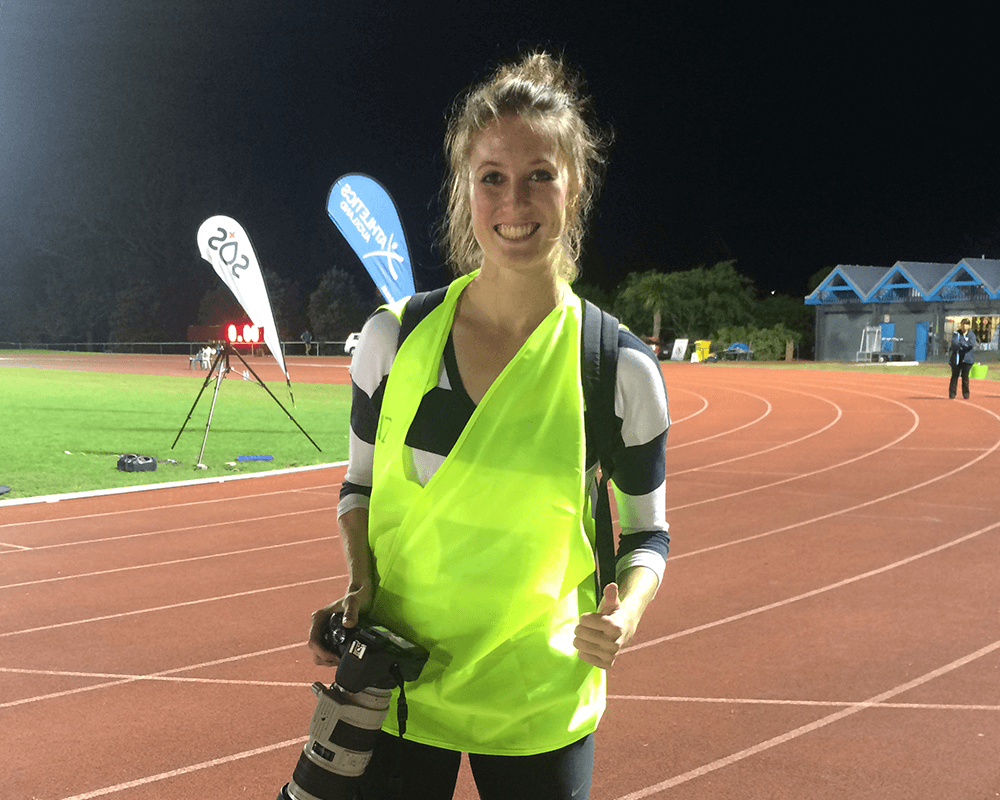
The first time I started shooting bigger sporting events, big enough to have a bunch of other photographers also covering the same event weather for agencies, news outlets etc, was for Athletics. I was lucky in the sense that due to the fact I was shooting for our governing body plus I had been in the sport for years as an athlete myself, it was already a very familiar and comfortable world. This allowed me to gain a reputation for myself not only within the athletics world but further to other sports. Being a young woman (I was 19 when I first took my camera to the track, and 21 when I started shooting athletics professionally) actually gave me a huge advantage in this aspect. As there aren't many young women, or women in general in the world of sports photography I found it easier to gain a name for myself as you stand out a bit more.
I used social media to my advantage and just continued working on my brand and my craft. I got picked up to cover the World Masters Games in 2017 as one of the official photographers which was my first gig outside of athletics. To my delight there were other women there too! Some my age even, from other sports. This event helped me grow as a photographer, covering sports I had never covered before just reliant on past sporting knowledge and basic sports photography skills. I made friends with other photographers from all over the country which is always the best part of this gig as you meet them again in more events to come! The guys in the World Masters Team were so lovely, accommodating and great to hang out with. The more experienced ones took you under their wing and helped you get better at what you do. There is actually a Facebook group called New Zealand Sports Photography Group which I encourage all, aspiring or experienced photographers to join. People are there to help you and there is plenty of banter flying around too.
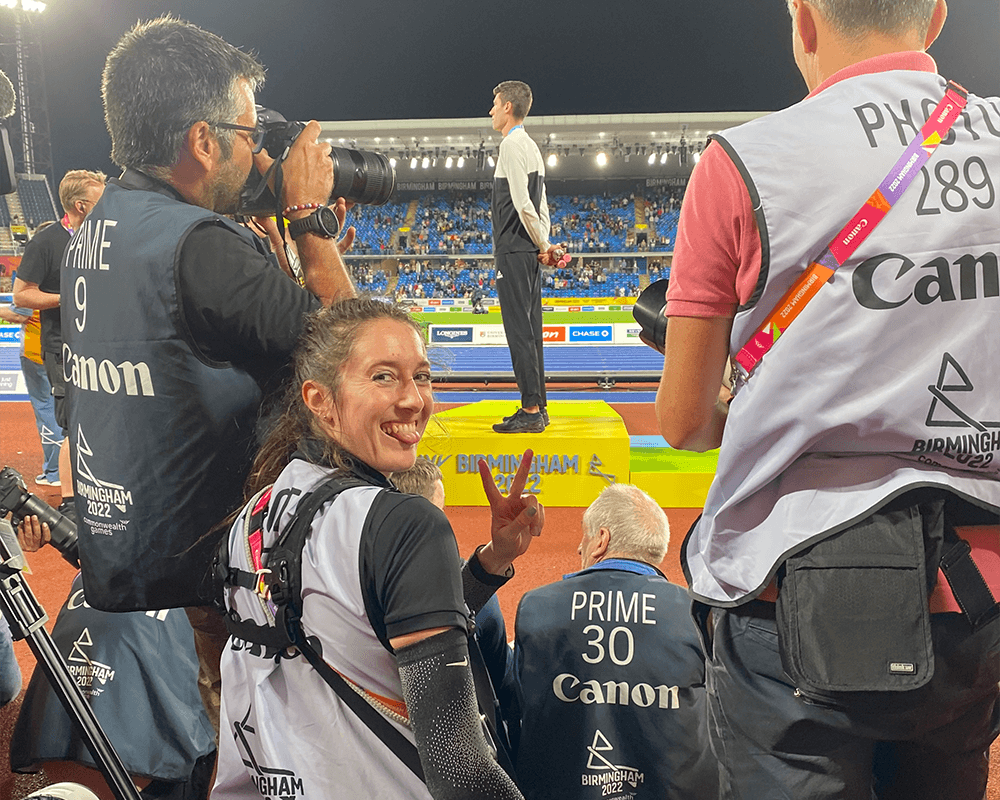 2022 Commonwealth Games, at the podium photographing Hamish Kerr’s Gold Medal in the High Jump in Birmingham, UK.
2022 Commonwealth Games, at the podium photographing Hamish Kerr’s Gold Medal in the High Jump in Birmingham, UK.
As I have progressed through my career, covering bigger and bigger events, simply being a woman has not inhibited me at all in getting a job done. I find it is all about your vibe. Doesn’t matter if you are a man or woman, if you have a good vibe, are considerate and you are a nice person and can have a laugh, you will be welcomed and accepted everywhere you go. I am often making friends with the photographer, volunteer or official sitting next to me in the stadium. The social side of these events is also great fun. You all hang out in the same media room editing so you build a nice community and often head out for food together and grab a drink after the event. You also grow great relationships with the athletes you work with as you are there in the trenches capturing the result of years of hard work and dedication. My favourite part of being a photographer is all the friends I make with people from all over the world.
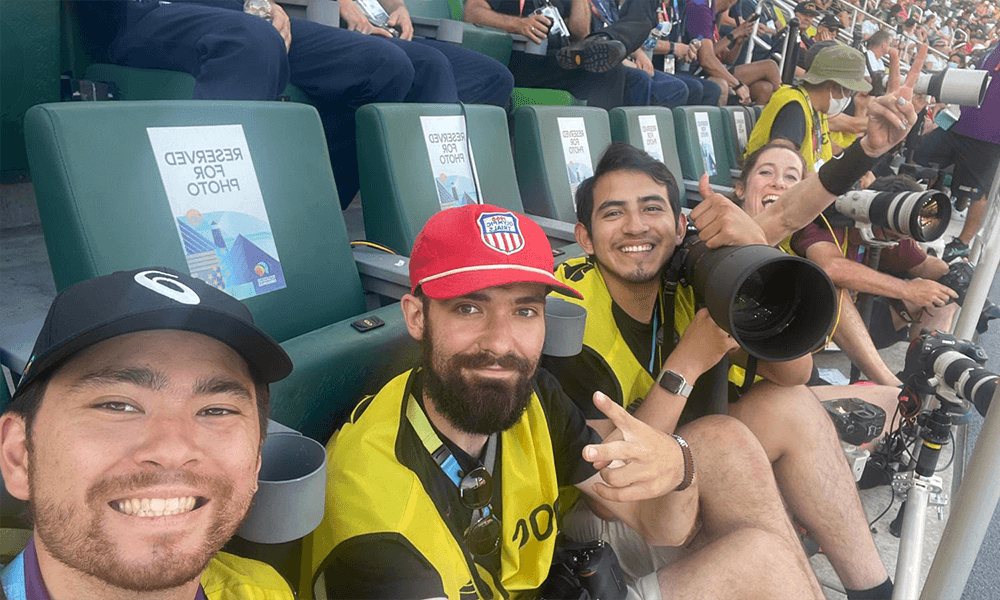 Group of us on the floor waiting for the track finals at the 2022 World Athletics Championships in Eugene, Oregon.
Group of us on the floor waiting for the track finals at the 2022 World Athletics Championships in Eugene, Oregon.
1. Knowing your sport gives you a huge advantage when you are covering it, especially in a sport as complicated as athletics where there are so many different events within the one arena.
2. Another huge tip is just being nice and treating the athletes like human beings, as strange as that sounds in the higher levels this is often forgotten.
As I work for the team (and was already in the sport myself) I developed fantastic friendships with the athletes by being alongside them in the trenches and capturing their journey. That also allows me to capture intimate images of the athletes pulling a face to me - personal ‘human’ images that I might not necessarily get without that established relationship. The athletes know I am on their side. This translates to when I am working with athletes in other sports as well for editorial/commercial work as if you are nice and approachable, athletes feel comfortable around you it is reflected on the images itself. Having a huge camera in your face can be intimidating and I think as women we do have a little bit of an advantage as sometimes we are perceived as more warm and not as intimidating as men. This combined with clear knowledge of sport gains trust in the athlete and you both can work together to create magic.
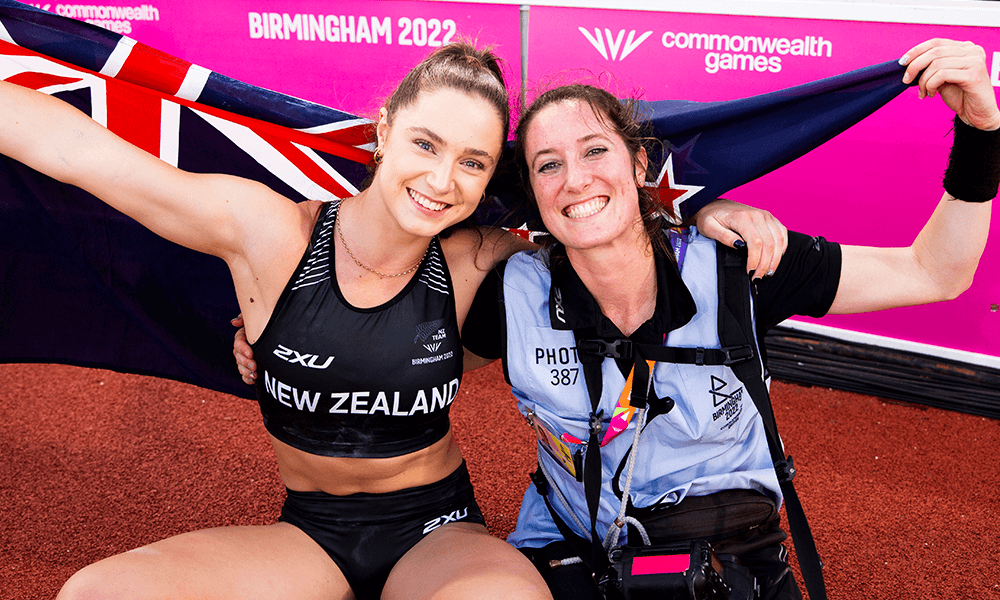
3. Another tip is there is no secret that gear is heavy and we aren’t going to ignore the elephant in the room that generally speaking women often aren’t naturally strong as men so here are some tricks to help this so it doesn’t become an issue. Gear is getting lighter thanks to Canon’s Mirrorless and RF range but it is also good to know some ergonomic tips to help you shoot longer and fatigue less.
• Battery grips for body vs. lens weight distribution: When the weight is closer to your body it stops the ‘tipping’ feeling you might experience when using a large lens. Often when using large lenses your left arm/shoulder is working reasonably hard as well as your right wrist from holding up the camera in a way to compensate for the heavy front lens as well as fatigue in your shoulders, lats and back. When you reach the telephoto realm this will happen more the larger the focal length. When using smaller bodies such as the EOS R5 or EOS R6, I recommend getting a battery grip. This will help add weight to the body bringing the distribution closer to you. I personally find using my EOS-1D X Mark III much less fatiguing on my EF 70-200mm f/2.8L IS III USM and EF 70-300mm f/4-5.6 IS II USM compared to my EOS 5D Mark IV (without the grip) due to the weight distribution. Battery grips also allow for vertical shooting like the EOS-1D X Mark III and EOS R3 which also helps reduce wrist fatigue when shooting vertically as you can hold your camera the same as if you were shooting landscape rather than having to bend your wrist and compensate with your body.
• Straps: Good straps are KEY in the fatigue battle, especially for those with slim shoulders. When you leave your camera on your shoulder you might subconsciously shrug your shoulder to keep it from slipping off which fatigues your traps. When you hold the camera in your hand all day and just wrap the strap around your wrist (I used to do this when I only had one body) often your forearm can fatigue. If you are shooting long days and you are struggling with any of this, I recommend a sling / cross body strap for a single body or a harness for two so you don’t have to ‘hold’ your gear when walking around. Experiment because everyone is different. Generally I avoid having the camera on my neck as I find it fatigues my neck muscles really fast cause it brings my head forward slightly (your head is pretty heavy remember!) This is for people who free hold and don’t use monopods.
• Monopod for big lenses: I personally don’t like using them as I find it limits my own shooting style but when I am using something like a EF 600mm or EF 200-400mm and a linear sport (athletes stay on the ground mostly) I will use one. Get one that's got a good foot on the bottom so it doesn’t slip on the ground and carbon fiber to limit weight.
• Kneepads: I get laughed at for this but this is a game changer, especially on a track! Bringing a stool around is just a pain in the butt if you are moving around a lot. Plus there isn’t often a seat around so a knee pad allows you to drop down on your knee to get a lower angle shot without bruising it. Some tracks have bits of rubber too that can really cut into your knees too!
• Actually doing some training: You can do all these things but in reality if you don’t exercise much or at all, it won’t help much. Often as a sport photographer there is a lot of walking around to get to positions carrying all your gear, plus you will sometimes find yourself in weird positions to get your shot. Get out there and get your body moving in whatever you enjoy for cardio but for strength as us women aren’t always naturally strong some extra training might help you. If you are experiencing a lot of fatigue or soreness talk to a trainer/physiotherapist to see if they can offer advice. I personally realized this when I swapped to pole vault from running. I noticed I fatigued less while working the stronger I got so hope you can benefit too from my discovery! For photoshoots I often am walking to interesting locations to find my images so it is nice not to be a puffing mess when I reach my vantage point.
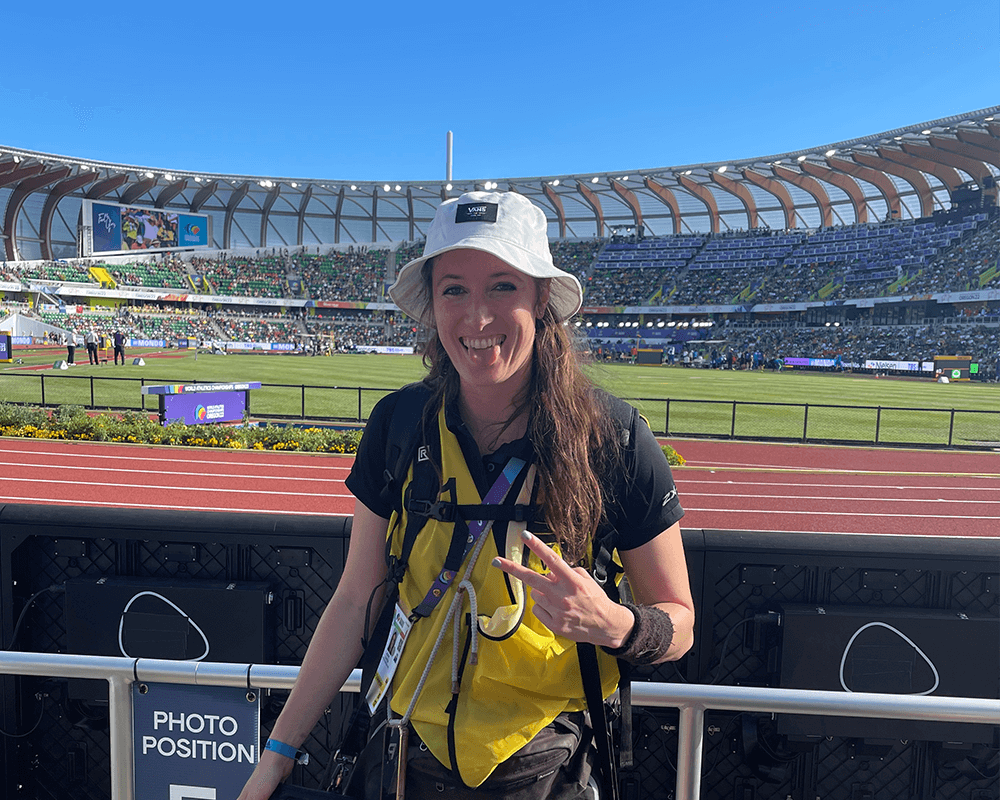
And finally, basic shooting tips for sport.
• Make sure your autofocus mode is Al Servo not One Shot as Servo focuses on moving subject.
• Shoot as wide open as you can for most situations, this will help isolate your subject from what can be a busy background and if you frame your subject tighter (if you can) it will help with that depth in the image. Or not if you want that nice space in your image.
• To freeze subjects in action 1/1000th of a second is safe, you might find that is sometimes too slow. If you are finding so, don’t be afraid to crank up your iso. Full frame Canon cameras can handle the high iso very well!
• Another tip is don’t keep your face down the barrel. Keep an eye open and constantly look around and hunt for frames. If you are constantly in the viewfinder you can miss things!
Finally, these are tips, not laws. Rules are meant to be broken! The field is your canvas and your camera is your paintbrush, go make some art. I encourage everyone to get out there and give sports photography a go! It is not as intimidating as it’s often perceived and you might make some great friends.
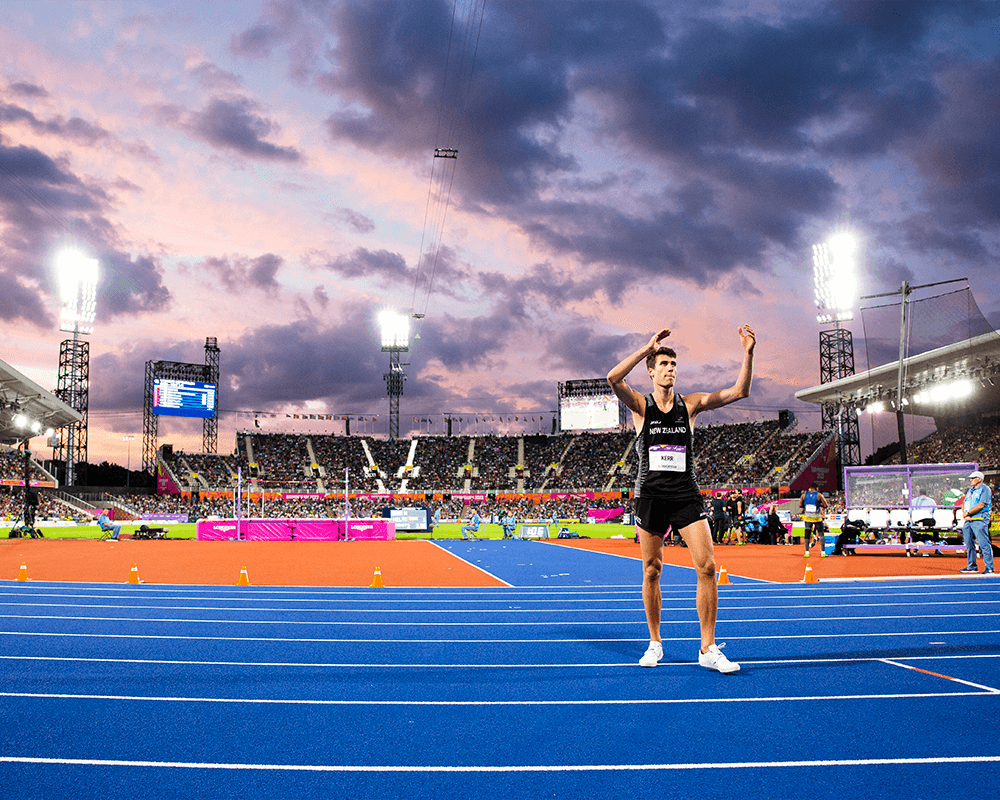
Competing in sport since she was 5, Alisha was destined for an athletics career, until an injury decided otherwise. Unable to compete in the 2013 Auckland Championships, she used her creative skills and connection with the competitors to document their efforts, igniting a newfound passion for the craft. With a unique understanding of the grind, emotion, and triumph of our sporting heroes, she makes a natural professional sports photographer, and has just launched her own sports content company.
Find out more about Alisha and her work on her website and Instagram. Explore the Cameras and Lenses that Alisha uses.

Harry Talbot: Capturing the Tour de France
Phil Hillyard has captured countless iconic sports moments across 30 seasons of AFL. We go behind the scenes with the Sydney Swans at the Sydney Cricket Ground for a game of Friday night footy.

Canon Professional Services at Repco Bathurst 1000, with the EOS R3.